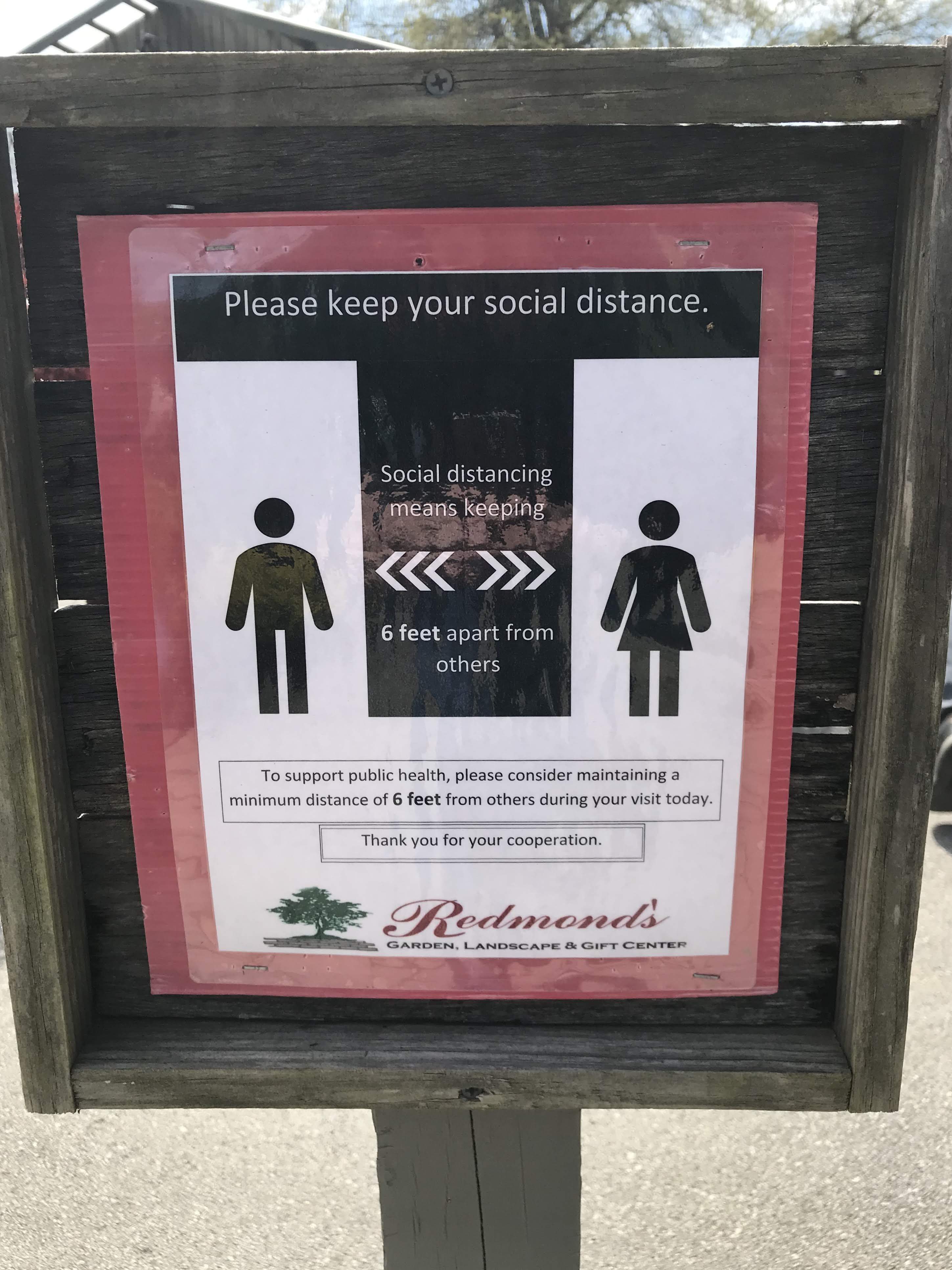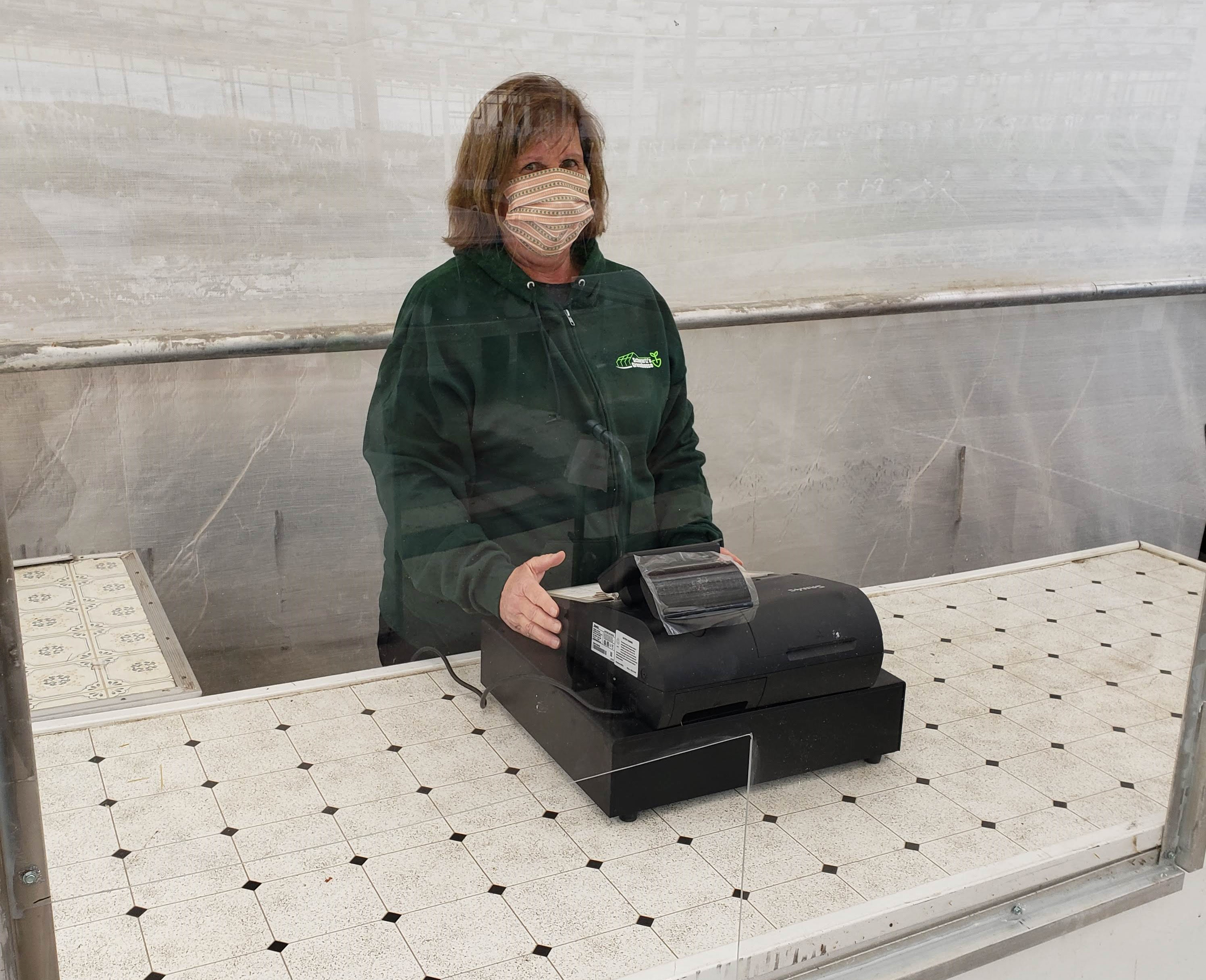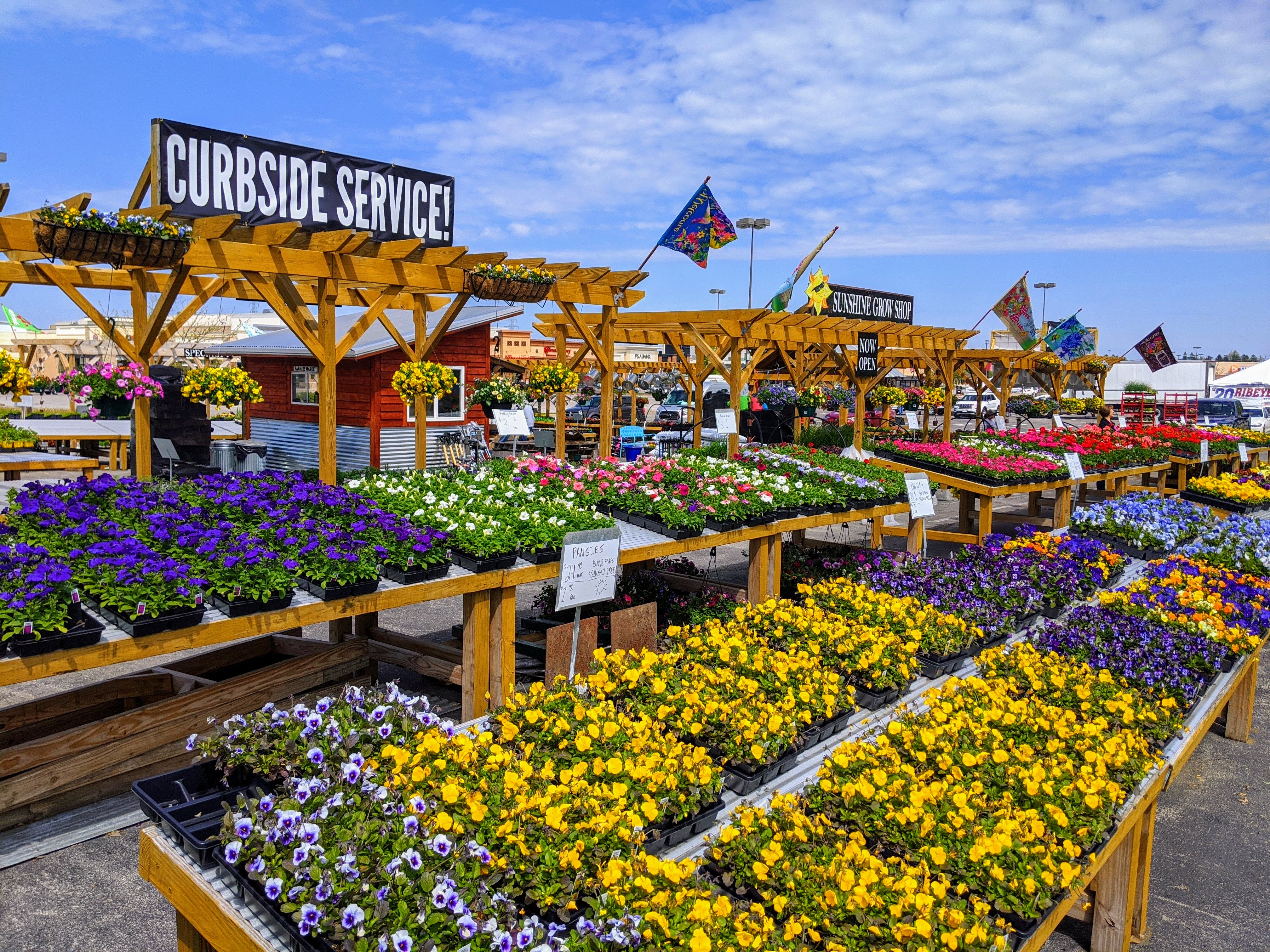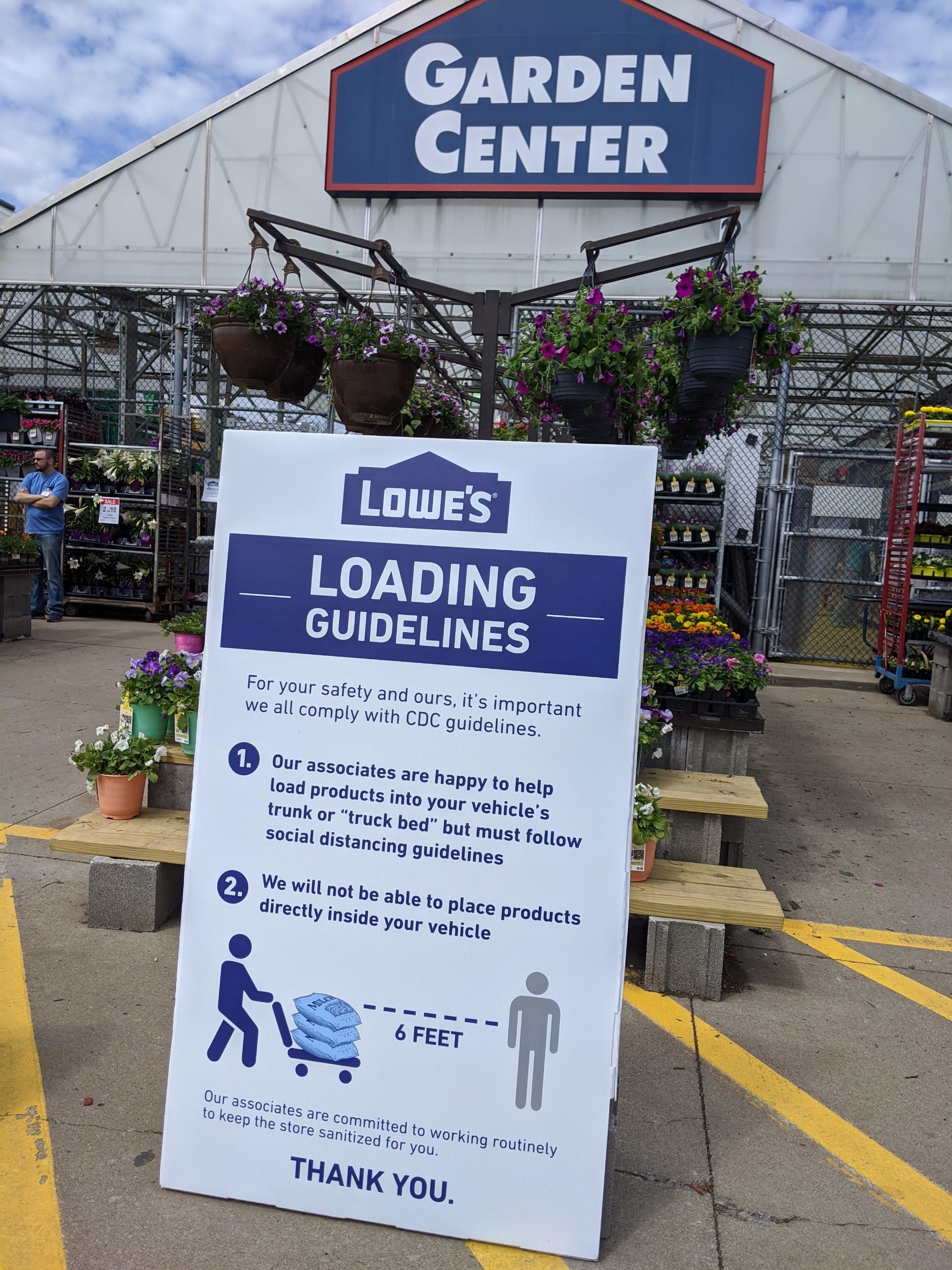Garden center retail survival strategy series: Thinking through the shopping experience
Garden retailers should plan for a safe shopping experience for customers by implementing social distancing, curbside pick up and touchless payment options.

Part 4: Thinking through the shopping experience
In the “Garden center retail survival strategy series,” Michigan State University Extension has covered survival strategies, communication tips and marketing and merchandising strategies. The final article in this series covers how garden retailers can be prepared for an entirely different sales season for spring 2020. During a time when the Governor’s “Stay Home, Stay Safe” order has been extended, you must use this time to think about how you will conduct an entire sales season where social distancing and possible closures continue. Are you ready to merchandize your crop online and set up a touchless payment and delivery system? The merchandizing might be an easy task compared to considering how to move your entire shopping experience to order forms, deliveries or curbside pickup.
Receiving orders from customers
Retail garden centers need to be prepared to receive orders via phone, email or by a website for this coming spring season. In order to prevent overloading your staff or your customers, consider featuring products that focus on solutions and packages, which will help with logistics for delivering your orders.
Phone and email orders
If your retail sales are not yet ready to move to an online website or other shopping experience, you might consider using an order form (similar to fundraisers). Retailers can distribute the order form through a Facebook page or e-newsletter. Consumers will then be able to place their orders by either calling the business phone line, Google forms or through email.
If you are using a phone line, try to designate one or more phone lines to taking the orders and then use other phone lines or disposable or personal cell phones to call customers back in order to take or verify orders or set up pick-up/delivery times. By doing so, you will keep your main phone line as open as possible. Using email or an online form will be easier to manage so that many orders can come in simultaneously and customers aren’t left frustrated with busy signals.
Website orders
There are many services that provide businesses with the ability to build a website including Weebly, Google, Bigcommerce, Shopify, Lightspeed and Woocommerce. In light of the current crisis from COVID-19, the infectious disease caused by the novel coronavirus, Aaron Allison, co-founder of SBI Software, has developed the website No Contact Plant Pick Up, a web-based platform to support a safe, no contact sales process for retailers of live goods. Consumers will be able to access a website platform to order plants online and have their order loaded into their trunk. It is a rapid way to launch a website for those retailers with a limited online store presence.
Similar to the phone and e-mail orders, retailers should consider the number of items to list on the website as it might not be feasible to offer all their SKUS rapidly on a website. In addition, it might overwhelm the sales team pulling orders, who must keep their own social distancing from one another.
Video concierge
Having no contact sales is particularly difficult for the horticultural industry because our shoppers are used to browsing, examining and selecting the plants, reading tags, studying signs, talking with staff and choosing the best one. In order to provide a more personalized experience, retailers could consider a video concierge with customers. Customers could sign up for times to video chat with employees so that they can help them pull orders. This strategy is extremely time intensive and might only be practical for a high-value minimum order, a substantial fee, or a percentage of the sale.
Delivering orders
Socially-distanced shopping experience
In some areas, garden retailers will be able to provide a socially distanced shopping experience (Photo 1). Garden retailers need to comply with state and local government regulations in their area to do both what is legal and make choices on what is ethical in your situation. If a retailer is able to and decides to open their store for customers, we recommend that you follow the social distancing guidelines given to current essential businesses, such as grocery stores.
For example, in Michigan, large stores must limit the number of people in the store to four customers for every 1,000 square feet and actively monitor the foot traffic in the store; you might consider even less people per square foot of retail garden center space. Some stores in other states were using 25% of the fire marshal’s maximum occupancy, which helps shoppers adhere to the minimum of 6 feet between customers (Photo 2).

In addition, the retailer must provide sanitized shopping carts, check-out counters and credit card machines. Other stores are installing plastic or glass sneeze and cough guards to limit the clerk’s exposure to the customer during check-out (Photo 3). You might even consider asking customers to wear masks inside to protect each other and your staff. Depending on the flow of your retail, you might consider making aisles one-way to keep shoppers away from each other. The regulations and best practices for grocery stores continue to evolve daily, so keep up with the legal regulations in your area and try to mimic the best practices of grocery stores.

Curbside pick up
The most likely option for most retailers during the 2020 spring season is establishing a curbside pick-up program at your business (Photo 4). Your number one goal is to provide customers with the products they need and want while keeping you and your staff safe. As consumers place their orders, assign each an order number.

Consider how you will deliver their order when they pull up with their vehicle. You could assign them a stall number and have their order placed on a cart or a table so they can load it into a car themselves. You could also have an employee wheel their order out to cars on a cart or a shopping cart once they arrive. Be sure that the employees remains at least 6 feet away from the customer (Photo 5). If the customer is touching the carts, be sure to sanitize them between orders.

Drive thru
A drive-thru is a way to move a significant amount of product quickly. Garden retailers could consider placing the menu online or distributing it through an e-newsletter, Instagram or Facebook. Cars could pull up under a large tent between racks of plants or plants on displays. Customers could simply point to the plants that they would like without leaving their car and staff could then tell the customer where they could meet their order and load it into their car on their own.
Home delivery
Delivering plants to people’s homes is a method that needs more infrastructure to implement but may be the safest way to sell products, especially to those that feel that they are high-risk for becoming sick and cannot leave their homes. Garden retailers should consider charging a flat delivery fee within a certain mile radius of the business. Each morning, upon receiving an order, the garden center staff can design a geographical map of the day’s orders. Garden retailers can leave the order on the porch, take a photograph as proof of delivery, and then call and text the customer that their order has arrived. Retailers might want to consider a minimum order for this service as well, considering the additional time and effort for the staff.
Providing live goods in a time of social distancing will be a challenge. If your garden center is not open, take this time to plan and prepare for a sales season that will look very different from any other year. Now is a time to reach out to your customers virtually and show off your products that they soon will be able to purchase!



 Print
Print Email
Email




